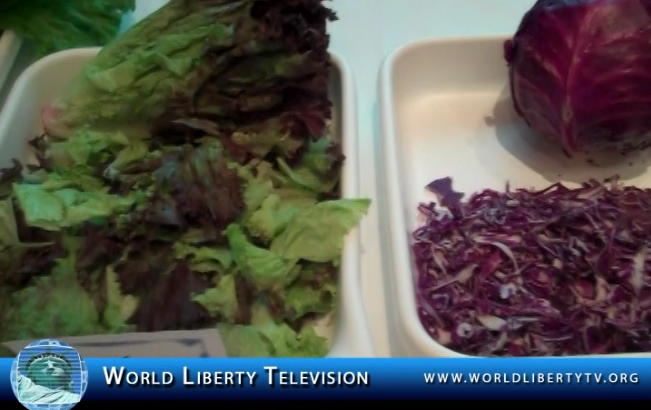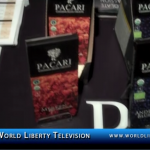Here are a few facts about salad – from the Dole Salad 101 Guide Book.
Dole presented us with 28 different salad veggies. From ones I have heard of – like iceberg, romaine – to new varieties like Tango and Mizuna. Then each one of us tasted these varieties back to back with no added salad dressings – raw and in their pure taste profile state. So much fun! It was amazing to be reminded of the different tastes and texture of different salad varieties. Here are a few of my favorite varieties we tasted – and some nutrition facts:
Butter lettuce – excellent source of vitamins A and K – and folate. Small round heads of lettuce. Soft and succulent with “buttery” textured leaves.
Green and Red Cabbage – dense, waxy heads – crunchy texture. The red cabbage has twice the vitamin C as green cabbage! Both red and green cabbage are good sources of glucosinolates that help promote heart health.
Escarole – a member of the endive/chicory family. It has broad, crispy, slightly curved pale green leaves. Escarole is high in folate. I love the mild, bitter, complex flavor of raw escarole – but you can also add it to cooked dishes like soups.
Frisee – ah yes, the “frizzy” looking lettuce. Although it used to be thought of as a purely ‘accent’ ingredient to salads – a new trend is to use frisee as the main ingredient. Crunchy and zesty – frisee will add some zing to your salad. It is packed with nutrients. Folic acid, vitamins A, C and K and manganese. It has approx. 1/3 the RDA of both vitamins A and C per serving!
Iceberg Lettuce – crunchy and crisp – this lettuce is not a “powerhouse” of nutrients – but is a good source of vitamin K.
Radicchio – those purple round heads of biter-tasting leaves are rich in phosphorus, calcium and vitamins B and C. Add some complexity to your salad by tossing in some radicchio.
Romaine – one of my classic faves. The latest trend is to grill your romaine then chop it up into a salad. So good! Romaine is rich in calcium, iron, magnesium, potassium, sodium, beta-carotene and vitamins A, B and C.
Snow Peas – I always forget that snow peas are delicious eaten raw! And they are a great source of vitamin C and iron.
Arugula – possibly the most “trendy” lettuce variety is spicy arugula. It is also called “Roquette” to some. It has a peppery mustard flavor and its nutty flavor matures into a slight bitterness as the leaves mature. Arugula contains glucosinolates which are believed to have a possible protective role against certain types of cancers.
Tango – a baby tender leaf lettuce with ruffled edges. Adds a soft texture to salad mixes. You will probably find this in a spring mix variety.
Mache – I adore mache, also called Lamb Lettuce. Sweet, buttery, nutty and tender – you’ll swoon over this gently leaf. Mache is rich in B vitamins and vitamin C.
Mizuna – what a fun name, right? Mizuna is a mustard green with small feathered leaves. It has a slightly peppery, mild mustard flavor. Excellent source of vitamins A and C.
Spinach – we all love these tender sweet and salty leaves of spinach. Spinach is indeed a nutrient powerhouse: rich in vitamins A, C B6, folate, iron, calcium and magnesium.








